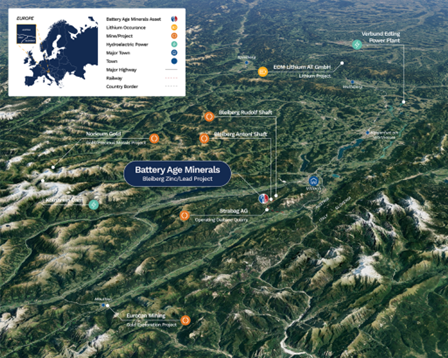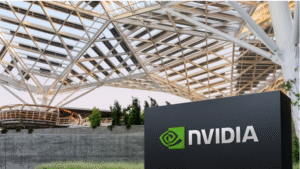Battery Age Minerals (ASX:BM8) and the millions of tonnes of metal nobody wanted
![]() Nick Sundich, November 29, 2024
Nick Sundich, November 29, 2024
What is so intriguing about Battery Age Minerals? Well, these days it seems barely a month goes by without some commodity being hit with export bans out of China. BM8 is a company focused on one such commodity. The commodity we’re looking at in this article is a little-known metal called germanium. Little-known, but it’s crucial in many respects!
Germanium: Another metal subject to export restrictions from China
In July 2023 the Chinese government announced that it would impose restrictions on exports of eight products made out gallium, atomic No. 31 and six products made out of germanium, atomic No. 32. The restrictions came into effect in August 2023. In this era of heightened geopolitical tension, it’s not too hard to figure out what’s going on. Both metals are critical for high-tech applications, and in each case, China controls the lion’s share of the world’s supply. It’s basically China trying to make it harder for the US and Europe to run their economies on a business-as-usual basis.
That was the bad news for world economy in July 2023. The good news at that time was that an ASX-listed company was sitting on, potentially, a very large source of germanium right in the middle of Europe. Battery Age Minerals (ASX:BM8) had only recently picked up the old Bleiberg Lead-Zinc Mine in Austria, and after a recapitalisation had relisted on ASX in February 2023. Germanium often occurs in lead-zinc deposits and this mine back in the day had been the world’s sixth largest supplier. With germanium prices about to skyrocket, it didn’t take long before Bleiberg was a top priority for Battery Age, and it remains the company’s flagship project.

Source: Company
All about Bleiberg – Battery Age Metals’ flagship asset
Bleiberg lies near Villach, in Austria’s southern state of Carinthia, about two hours’ drive southwest of Graz, the city that gave the world Arnold Schwarzenegger, and four hours’ drive from Vienna. If the Bleiberg project works out the way Battery Age CEO Nigel Broomham thinks it can, his shareholders are going to make out even better than Arnie’s box office take. Broomham is quietly confident that there at least 2 million tonnes of lead, zinc and germanium still in the ground.
Yeah, we know, there’s no JORC-compliant resource yet, so no one should get too excited. But Broomham, whose previous career high was building out the resource at Pilbara Minerals’s Pilgangoora Lithium Mine in Western Australia, has looked at the technical literature and it’s credible.
From page 85 in Battery Age’s December 2022 prospectus there’s a pile of papers which the curious can take a look at. The two we got excited by was one whose title starts ‘ Die karbonatgebundenen Blei-Zink-Lagerstätten des alpinen und außeralpinen Mesozoikums’ and another titled ‘Current prospecting strategy for carbonate-hosted Pb-Zn mineralizations at Bleiberg-Kreuth’.
That’s where Ivan Cerny, who worked at the Bleiberg mine back when it was an operating mine, suggests that, potentially, there could be another 2 million tonnes in the already developed areas of the mine, plus another 8 million tonnes from areas that were never developed. And this metal, suggests Cerny in another paper called ‘Lagerstättenforschung in Kärnten Neuergebnisse und Aspekte für die Zukunft’, may exist at decent ore grades. Historical head grades at this mine were 1% Pb, 6% Zn and 200 ppm Ge, the latter symbol being the one for germanium.
Knowledgeable investors who know base metals will likely be impressed by the lead and zinc grades. However, it’s the 200 ppm germanium that really impresses Broomham. The price of germanium started going up in a serious way about a year after the export bans came in and it was clear inventories had run down.
As recently as June of this year you could get it in Shanghai for under US$1,400 a kilo. It’s now more like US$2,600 a kg. Now, ppm, that is, parts per million, is the same thing as grammes per tonne, the usual way gold grades are reported. Plug in US$2,600 an ounce for gold and US$2,600 per kg for germanium into a spreadsheet and 200 ppm germanium is the same thing at finding gold at more than 6 g/t.
The reason this potential bonanza – and we stress the word ‘potential’ – fell into Battery Age’s lap is that there’s been no operating mine at Bleiberg since 1993 so prospectors could simply peg it, and that was the project vended to Battery Age in 2022. There had been, however, a pretty prolific mine here since the 14th Century that had been good for around 2 million tonnes of lead and zinc over the next six centuries. >
In the decades after the Second World War a state-owned company had worked the mine, and it was only shut down in the low pricing environment of the early 1990s. Historically there were underground workings with around 12 km of strike length. There were around 1,100 km of workings over five shaft systems to a depth of 800 metres below surface.
What’s next?
Broomham’s main job today is work through the available data to plan next year’s drilling campaign at Bleiberg, which will likely kick off in the northern summer. Drill targets have been generated across a 6 km strike length and have been guided by about a century’s worth of mine records to which Battery Age now has access. Where it gets exciting is that the historical workings ended at a fault zone to the west.
Battery Age’s investigations have suggested that the various stratigraphic units that yielded lead-zinc ore continue beyond the fault zone, are within targetable depths, and in total are considerably larger than area of the historic workings. Battery Age pegged that ground in 2023 and owns it 100%, as against the smaller area around the historic workings where it’s a 51%.
Why get excited about the potential for a big new germanium ‘discovery’ in Austria?
Well, in part because this commodity is part of the future of semiconductors, which is a US$700bn a year business going to a trillion in the next decade or so. Add germanium to silicon in an integrated circuit and you’ve got chips that can work a lot faster and with much more energy efficiency. So, in the race for the best chips, germanium is likely to have a bright future. And in an environment where Europe wants to control its technological destiny with this critical material, Battery Age Minerals is particularly well placed.
You can currently pick up the stock for under A$10m, with a large slab of that market cap representing some shares in company. Investors should put this one on their watch list. We think that, like that other Austrian superstar, Arnie, it’ll be back…
What are the Best ASX Stocks to invest in right now?
Check our buy/sell tips
Blog Categories
Get Our Top 5 ASX Stocks for FY26
Recent Posts
Archer Materials Cracks Quantum Readout Challenge as Stock Surges 12%
Archer Materials Just Solved One of Quantum Computing’s Hardest Problems Archer Materials (ASX: AXE) jumped 12% today after unveiling two…
NVIDIA’s Blackwell Chips Ignite Record Demand in Q3
NVIDIA’s Blackwell Surge Tech investors and growth-focused funds will be breathing a sigh of relief after NVIDIA (NASDAQ: NVDA) delivered…
REA Group (ASX:REA): Here’s why it succeeded over Domain Group at home, but hasn’t done that well abroad
REA Group (ASX:REA) is best known in Australia as the owner of realestate.com.au. For so long, the company (which is…



